The Horror! The Horror! (Of Pitching to Nick Kurtz)
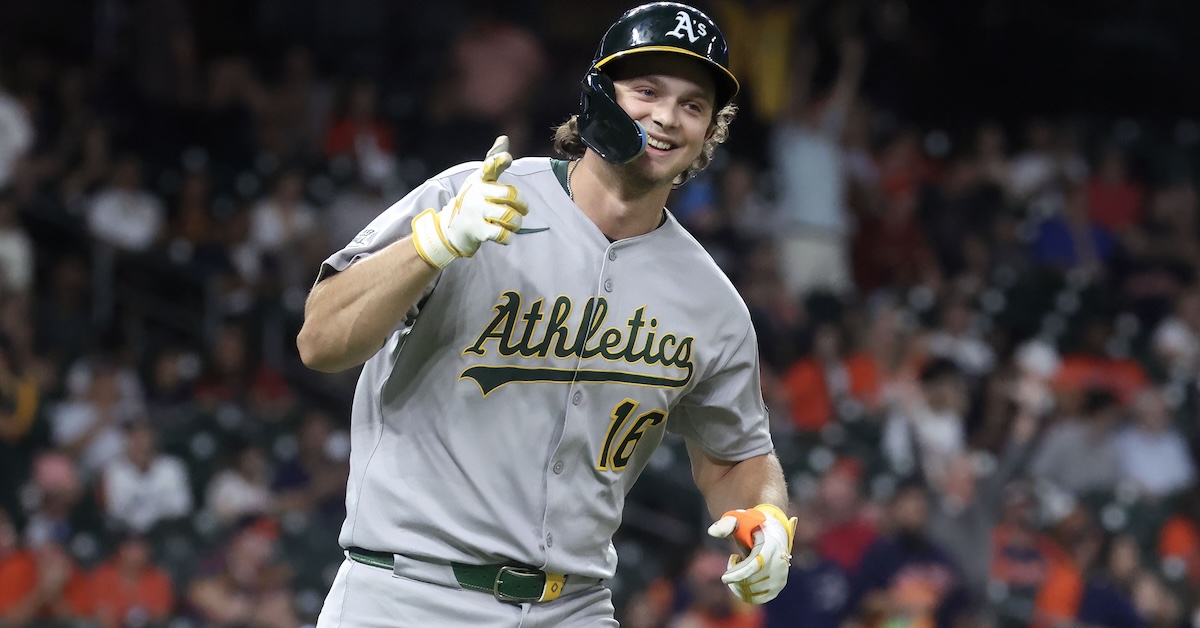
You’re probably pretty good at baseball if you end up on this list:
| Player | wOBA |
|---|---|
| Aaron Judge | .805 |
| Nick Kurtz | .778 |
| Christian Yelich | .749 |
| Shohei Ohtani | .746 |
| James Wood | .727 |
| Kyle Stowers | .700 |
| Kyle Schwarber | .682 |
| Riley Greene | .662 |
| Elly De La Cruz | .660 |
| Gunnar Henderson | .614 |
I get it. “Doing damage when you elevate the ball” isn’t the only skill that’s necessary to be a good major league hitter. It’s not even close to the only necessary skill. On the other hand, look at that list! It goes 10 hitters deep, and they’re all great. The worst guy on that list is probably Christian Yelich, and he’s having a nice year despite dealing with his chronic case of can’t-ever-get-the-ball-off-the-ground-itis.
Psh! Who cares about wOBA? What even is wOBA? First of all, good news, here’s an article explaining it in great detail. Second, fine, let’s use a different statistic then. Here’s slugging percentage, same minimum of 100 batted balls:
| Player | SLG |
|---|---|
| Aaron Judge | 1.402 |
| Nick Kurtz | 1.370 |
| Shohei Ohtani | 1.321 |
| James Wood | 1.234 |
| Christian Yelich | 1.225 |
| Kyle Stowers | 1.174 |
| Kyle Schwarber | 1.172 |
| Riley Greene | 1.104 |
| Cal Raleigh | 1.077 |
| Elly De La Cruz | 1.068 |
Ranking the MLB Prospects Traded at the 2025 Deadline
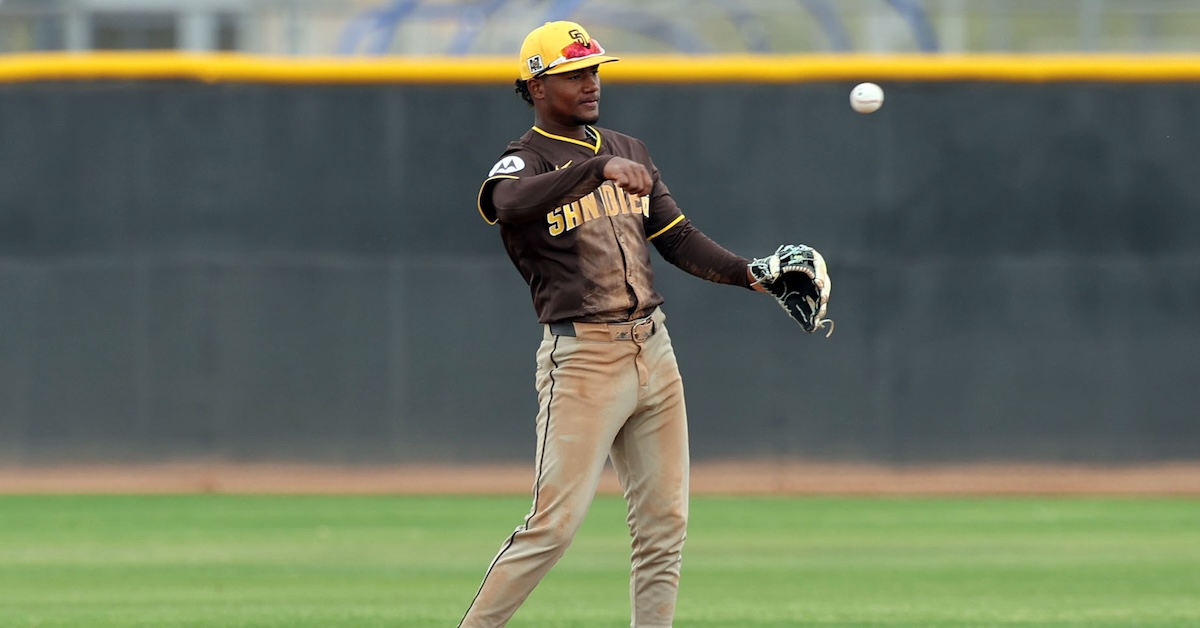
Ranked and briefly analyzed below are the prospects who have been traded during the loosely defined “2025 deadline season,” which for simplicity’s sake I consider all of July. Most of the deals these prospects were a part of have been analyzed at length on this site. An index of those pieces can be found here; you can also click the hyperlink in the “Trade” column below, which will take you to the relevant article. I’ve moved all of the 35+ FV and above players listed here to their new orgs over on The Board, so you can click through to see where they rank among their new teammates and read their full scouting reports, which have been updated where applicable. The Farm System Rankings, which update live, also reflect these changes, so you can see where teams’ systems stack up following the draft and the deadline. Read the rest of this entry »
Sunday Notes: Dustin May Has Become a Better Person Through Adversity
When the Red Sox acquired Dustin May from the Dodgers at Thursday’s trade deadline, they brought on board a starter with a pair of elbow surgeries in his rearview. The 27-year-old right-hander had Tommy John in 2021, then needed to have a flexor tendon repaired in 2023. Boston also brought on board a pitcher who has matured admirably since he was drafted 101st overall in 2016 out of a Justin, Texas high school.
“As a pitcher, I haven’t changed a whole lot,” May told me prior to the trade. “My stuff is pretty comparable to what it was before. But off the field, I’ve changed a lot. A lot of life changes have happened through the surgeries — a lot of good things — and I feel like I’ve definitely improved as a person and as a husband.
“We’re all very blessed, and talented, to be here,” he added. “Stuff can be taken away from you in an instant, and you can have no control over it. No matter how hard you work, or what you put into it, life can come at you very fast at times.”
A serious health scare last summer is an example. May suffered a torn esophagus that required emergency surgery. Less scary, but nonetheless troublesome, was his not bouncing back from TJ as well as he’d hoped. Read the rest of this entry »
FanGraphs Weekly Mailbag: August 2, 2025
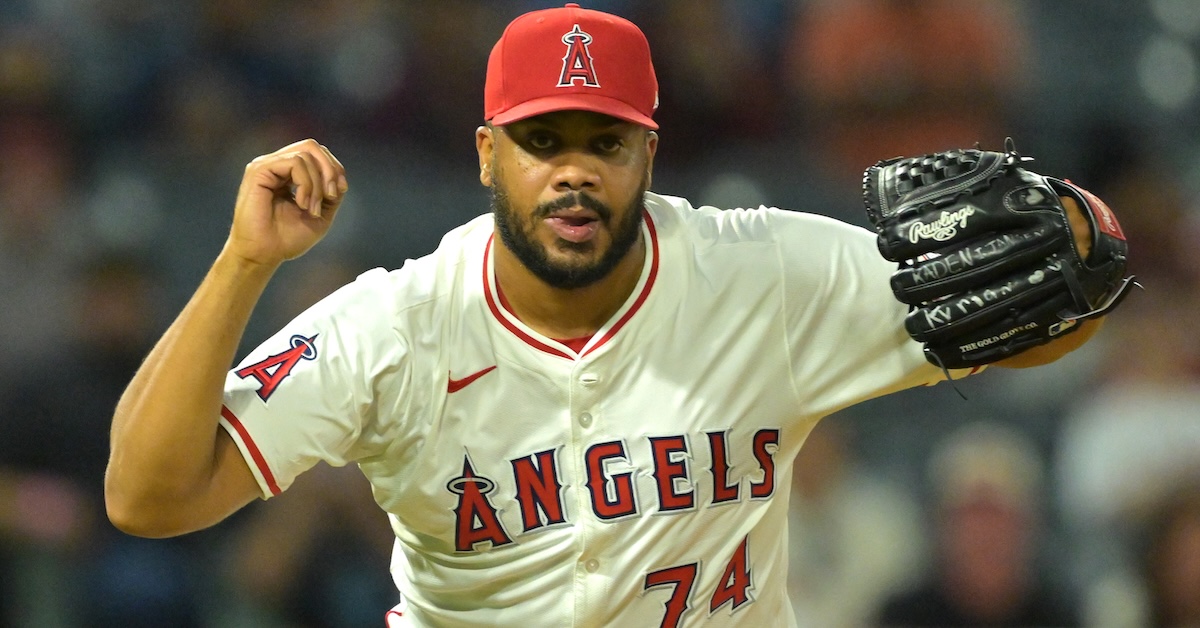
Thirty-six trades in a span of 18 hours. A deadline day record. This after there were a whopping 16 swaps the day before, for an astronomical two-day total of 52 — that’s also a record, and nine more than there were over the final two days before the deadline last year.
Conceptually, the numbers are staggering. But as I sit here writing this mailbag after 7 PM on Friday, the reality of what we all experienced is starting to sink in. And I don’t know about all of you, but after a marathon of editing trade analysis pieces for the better part of the last 48 hours, I’m twitching from what can only be described as an unholy cocktail of caffeine and adrenaline, and I can feel the comedown coming. I’m both absolutely riveted and utterly drained, and the only thing keeping me upright is a keen sense of anticipation for all of the great baseball still to come.
We won’t be covering any trade news in this week’s mailbag. If you want to catch up on or relive the chaos of the last few days, you can find everything we wrote about the trade deadline linked within this roundup post. Instead, we’ll lean a little more evergreen. Before we get to your questions, though, I’d like to remind all of you that while anyone can submit a question, this mailbag is exclusive to FanGraphs Members. If you aren’t yet a Member and would like to keep reading, you can sign up for a Membership here. It’s the best way to both experience the site and support our staff, and it comes with a bunch of other great benefits. Also, if you’d like to ask a question for an upcoming mailbag, send me an email at mailbag@fangraphs.com. Read the rest of this entry »
Effectively Wild Episode 2356: The Trade Lifeline

Ben Lindbergh and Meg Rowley banter about where they stand on two competing perceptions of this year’s trade deadline activity and why it turned out not to be a dudline, then discuss all the major storylines—including A.J. Preller’s all-in antics, the Twins’ teardown, Carlos Correa’s Houston reunion, and the closer carousel—before going through moves on a team-by-team basis to offer critiques and praise.
Audio intro: Daniel Leckie, “Effectively Wild Theme”
Audio outro: The Shirey Brothers, “Effectively Wild Theme”
Link to Count von Count
Link to Jake and Jordan data
Link to Paine on deadlines
Link to Paine on this deadline
Link to Sheehan on the deadline
Link to Dan’s post
Link to ZiPS verdicts
Link to FG roundup
Link to MLB.com tracker
Link to FG’s The Board
Link to Pipeline’s Top 100
Link to Bandwagon on the Padres
Link to BA on the Padres
Link to Preller’s past prospects
Link to FG playoff odds
Link to “bob’s your uncle” tweet
Link to MiLB FA draft stats
Link to Twins letter
Link to Antonetti Twins quote
Link to Breslow quotes
Link to minor league reset episode
Link to Greene’s mustache story
Link to Cashman on Jones
Link to info on Vaughn
Link to Seranthony graphic
Link to Griffey cow story
Link to Griffey cow video
![]() Sponsor Us on Patreon
Sponsor Us on Patreon
![]() Give a Gift Subscription
Give a Gift Subscription
![]() Email Us: podcast@fangraphs.com
Email Us: podcast@fangraphs.com
![]() Effectively Wild Subreddit
Effectively Wild Subreddit
![]() Effectively Wild Wiki
Effectively Wild Wiki
![]() Apple Podcasts Feed
Apple Podcasts Feed
![]() Spotify Feed
Spotify Feed
![]() YouTube Playlist
YouTube Playlist
![]() Facebook Group
Facebook Group
![]() Bluesky Account
Bluesky Account
![]() Twitter Account
Twitter Account
![]() Get Our Merch!
Get Our Merch!
Podcast (effectively-wild): Play in new window | Download
Subscribe: RSS
Outfield Help at the Deadline: Alex Call to the Dodgers, Miguel Andujar to the Reds
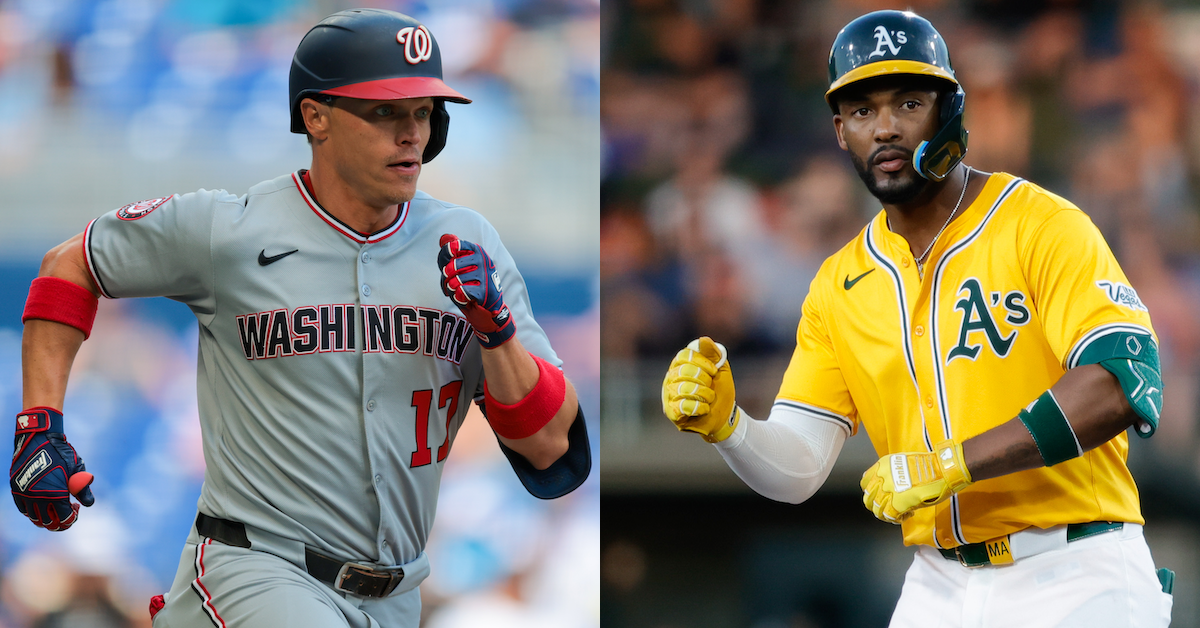
Well, here it is, folks. This is our final transaction analysis piece of the 2025 trade deadline, and we’re covering two outfielders who will now be in position to help playoff contenders. On Thursday, the Dodgers acquired outfielder Alex Call from the Nationals in exchange for pitching prospects Eriq Swan and Sean Paul Liñan. And the Reds traded with the A’s for veteran Miguel Andujar, sending back pitching prospect Kenya Huggins, so under no circumstances can we accuse Cincinnati of prospect hugging.
We’ll start with the Dodgers-Nationals deal. Here’s my analysis: Alex Call is pretty good. He can help the Dodgers win. You are welcome. ESPN’s Jeff Passan broke news of the deal, while Andrew Golden of the Washington Post reported the names of the pitchers headed to Washington.
To the continued and possibly eternal chagrin of Baseball Prospectus editor-in-chief Craig Goldstein, Call will not be simply taking over Michael Conforto’s spot in left field. Earlier on Thursday, the Dodgers traded the lefty-hitting James Outman to the Twins in exchange for reliever Brock Stewart, leaving a space for the right-handed Call as a fourth outfielder and likely platoon partner for Conforto. If you put the two trades together to compare apples to apples, you get Call for Outman (and Stewart for two prospects). Call is three years older than Outman, with roughly the same amount of service time. He’s hitting much better than Outman right now and allows the Dodgers to get another right-handed bat in the lineup, but he offers a bit less upside in the future.
Call is 30 years old, and he has a career 102 wRC+ in 920 plate appearances. He’s been significantly better this season, running a 118 wRC+. He doesn’t have wild platoon splits either. This season, he has a 124 wRC+ against lefties and a 115 wRC+ against righties. Over his career, those numbers are 110 against lefties and 97 against righties. Conforto has much better career numbers against righties, but this season, he only has a wRC+ of 85 against them. It wouldn’t be unreasonable at all to just plug Call in as the starting left fielder and call it a day, and it would make Craig so happy.
Call has a reputation for speed and defense, but it’s worth at least noting that his sprint speed has declined some this season, and his defense has graded out closer to average so far. It’s possible that he’ll get some of that speed back, as he’s less than a year out from a tear in the plantar fascia of his left foot. Regardless, he should be able to hold down all three outfield positions when called upon. With James Wood, Dylan Crews, and more recently, call-up Daylen Lile in the outfield, Call no longer looked like a part of Washington’s future. On the other side, the Dodgers have made a decent upgrade to an outfield that has come up just a bit short all season.
Swan is a 23-year-old right-handed starter, and at 6-foot-6 with a fastball that hits 100 mph and iffy control, he certainly looks like a Washington Nationals prospect. He didn’t put up good numbers in college, and he hasn’t put up good numbers in the minors due to wild walk totals, but did you hear me say that he was 6’6” and can throw a hundo? Swan’s 4.43 ERA and 4.34 FIP this season mark big improvements from 2024, but he’s still a big development project. Eric Longenhagen ranked him 13th in the Dodgers system with a 45 future value back in April, but he now downgraded Swan to a 40+ because he looks more likely to end up as a reliever.
That said, Swan could be a pretty good reliever. Right now, Eric has a 70-grade on Swan’s slider. He can hit the zone with it, and its whiff rate is approaching 50%. The fastball is sitting 96, but it’s playing down and he isn’t throwing strikes with it. It might end up as a pitch that’s only good for trying to attract whiffs above the zone. But that’s as a starter. If Swan ends up as a max-effort reliever, a plus-plus slider and a high-90s fastball could work just fine.
The Venezuelan-born Liñan is 20 years old, and you won’t read anything about him that doesn’t start and end with his changeup. Eric put a 55 present value on the pitch back in April, when he ranked Liñan 30th in the Dodgers system with a 40 FV. Liñan has moved around the minors a bit this season, beginning in Low-A, making two spot starts in Triple-A, then going down to High-A. He got shelled in one of those Triple-A starts, but even so, he’s got an overall ERA of 2.78 and FIP of 3.29 in 18 appearances and 14 starts across those three levels. He’s walking more than 10% of the batters he’s facing, but he’s also striking out nearly a third of them. It’s worth noting the environment, too, because they make Linan’s ERA- of 61 and FIP- of 74 look even better. Jeffrey Paternostro of Baseball Prospectus wrote a very fun article about how to evaluate Liñan back in May, and I strongly recommend it. For now the question is how Liñan will develop and whether he can come up with anything else to complement his changeup. Eric wrote up a new blurb for him today, so I’ll give it to you verbatim:
Liñan had a dominant start to his 2025 season and was promoted out of Low-A Rancho after just a half dozen starts. He made two emergency starts at Triple-A before heading to High-A Great Lakes, where he had been good (but no longer dominant) in 10 outings prior to the Alex Call trade. Liñan’s best pitch is his tail-action changeup, which moves enough to have overwhelmed A-ball hitters so far. He beats a lot of hitters with his fastball for a guy sitting 91-92, but Liñan’s command may not be fine enough for that to be true against big league hitters. Strike-throwers with great changeups like this tend to pan out in the fifth starter range, at least, and if Liñan can exceed this projection it’ll be because he’s either sharpened his fastball command to thrive with 40 velocity, or he’s found a much better breaking ball than the cutter he’s throwing now.
This seems like a pretty good haul for Call. He’s a good player, but he fits better in the Dodgers’ current plans than he does in the Nationals’ future plans. Swan and Liñan are genuinely intriguing prospects who could contribute in the majors, but they’ve both got a lot of developing to do.
Now let’s get to the other deal. After trading with the Pirates for third baseman Ke’Bryan Hayes and getting starter Zack Littell from the Rays, the Reds kept on adding, sending Huggins to the A’s in exchange for Andujar. Ari Alexander of KPRC2 first reported the deal. Andujar is a nine-year veteran, but he’s finally on the brink of free agency and is performing, which meant that at the deadline, the A’s could turn him into a pitching prospect, the highest level of reincarnation a being can attain according to the religion practiced by the baseball team in Sacramento.
Andujar is no one’s idea of a star, but he’s crushing left-handed pitching, and for a Reds team with a 79 wRC+ against lefties, sixth worst in baseball, he must look like a piña colada in the desert. Andujar put up a 129 wRC+ and 3.9 WAR with the Yankees as a 23-year-old rookie in 2018, finishing second in the Rookie of the Year voting behind some guy named Shohei Ohtani. In the seven years since, injuries and inconsistency have limited Andujar to fewer than two seasons’ worth of games, and he’s put up -0.4 WAR with a combined 86 wRC+. That said, Andujar has looked better recently. He’s running a 107 wRC+ in 2025 and a combined 105 wRC+ over the last three years. Andujar is batting .422 with a 186 wRC+ in 48 plate appearances against lefties this season. Those numbers will play in any lineup.
This season, Andujar has split his time between third base and left field. The Reds have gotten just 0.4 WAR from the third base position and 1.9 WAR from the three outfield positions, both of which rank 26th among all teams. With Hayes joining the club, Andujar won’t see too much time at third, but he can combine with Noelvi Marte, who has now been moved from third base to the outfield, to platoon with lefty batters Gavin Lux and Jake Fraley. Connor Joe or Will Benson will need to be sent down once TJ Friedl returns from the paternity list. It’s a lot of moving parts for a small upgrade, but it is an upgrade nonetheless.
The Reds drafted Huggins, a Louisiana Tech commit, out of junior college in 2022, and Eric ranked him 26th among the organization’s prospects this May, with a 40 FV. However, Eric now has a 40+ grade on him, because after recovering from Tommy John surgery that torpedoed most of his 2023 and 2024 seasons, Huggins looks more like a starter. His changeup improved in a major way, giving him a third pitch, but there’s more behind it. “This guy’s conditioning totally changed during his TJ rehab,” Eric said. “He’s not as big as Sean Manaea, but he’s built like young Manaea, just an absolute unit. The better conditioning might be why his delivery is more under control now and he’s throwing strikes.”
Huggins is 22, and after the injury, he’s in his third attempt at Low-A with fewer than 40 professional appearances under his belt. There’s still reliever risk here. However, he has a 3.69 ERA and 3.64 FIP through just over 63 innings so far this season in Low-A Daytona, which gives him an ERA- and FIP- of 87. “He’s a little behind the developmental curve and still at Low-A,” Eric said, “but Huggins hasn’t been shy about mixing in all of his pitches; he’s throwing his sinking changeup (which might end up being his best pitch) to righties, and he can land a backdoor slider for strikes reliably. He has a lot of No. 4/5 starter ingredients now.”
This is a minor deal, but it’s easy to see the appeal on either side. Andujar’s skill set is somewhat limited, but it fits in Cincinnati and he comes at a reasonable price. The injuries make it hard to know how much Huggins will be able to offer, but there’s certainly enough to dream on.
Winners and Losers From the 2025 Trade Deadline
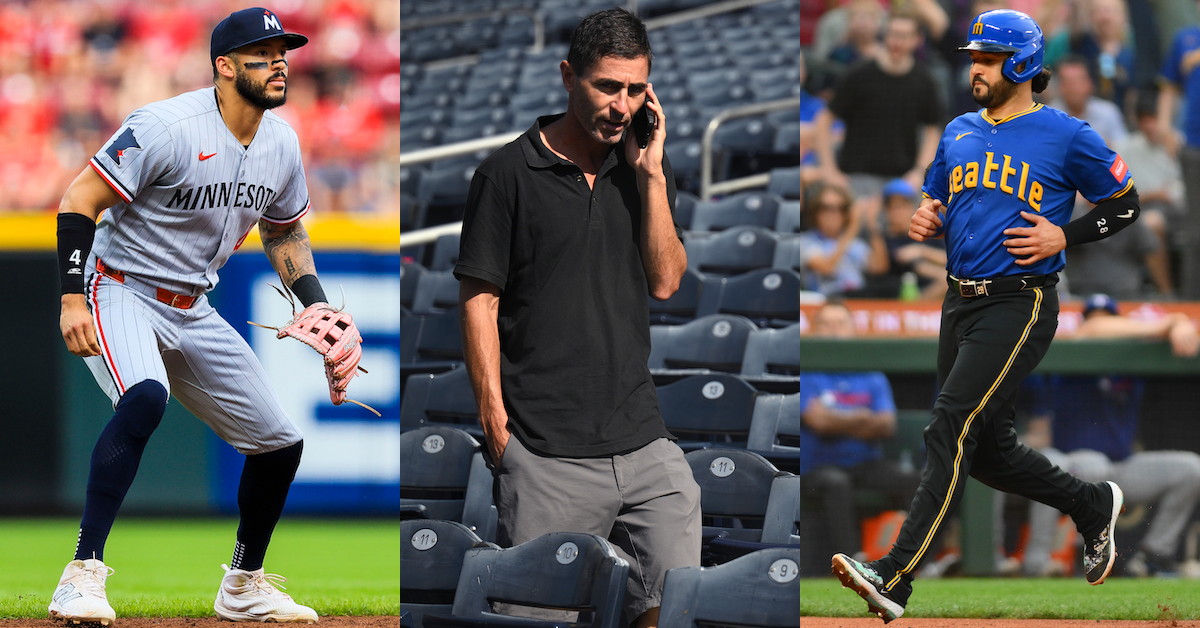
Now that the deadline dust has settled – or at least, started to settle – it’s time to start making sense of it. The Padres, Twins, and Orioles were everywhere. Top relievers flew off the board. Both New York teams spent all day adding. But who did well? Who did poorly? Who was so frenetic that they probably belong in both categories more than once? I tried to sort things out a little bit. This isn’t an exhaustive list. There were 36 trades on deadline day, a new record, and more than a dozen before it. Nearly every team changed its trajectory at least a little, and this is just a brief look into the chaos. Here are the trends that most stood out to me.
Winner: Teams Trading Top Pitchers
This year’s crop of rental players was lighter than usual, but deadline activity didn’t slow. Instead, it simply spilled over into relievers under contract for a while. Mason Miller, Jhoan Duran, Griffin Jax, and David Bednar are under contract for a combined nine more years after 2025. That drove the prospect price up on all four. Having long-term control of relievers might be less valuable than at other positions, but it’s still valuable.
Most of the best prospects who swapped teams at the deadline were involved in a trade for top pitching. Leo De Vries, the consensus best player of the 2024 international signing period, was the big name here, but both the Phillies and Yankees offered up multiple good minor leaguers in exchange for Duran and Bednar. Taj Bradley, whom the Twins got back for Jax, is a former top prospect who won’t be a free agent until 2030. Read the rest of this entry »
The Twins Blow It All The Way Up
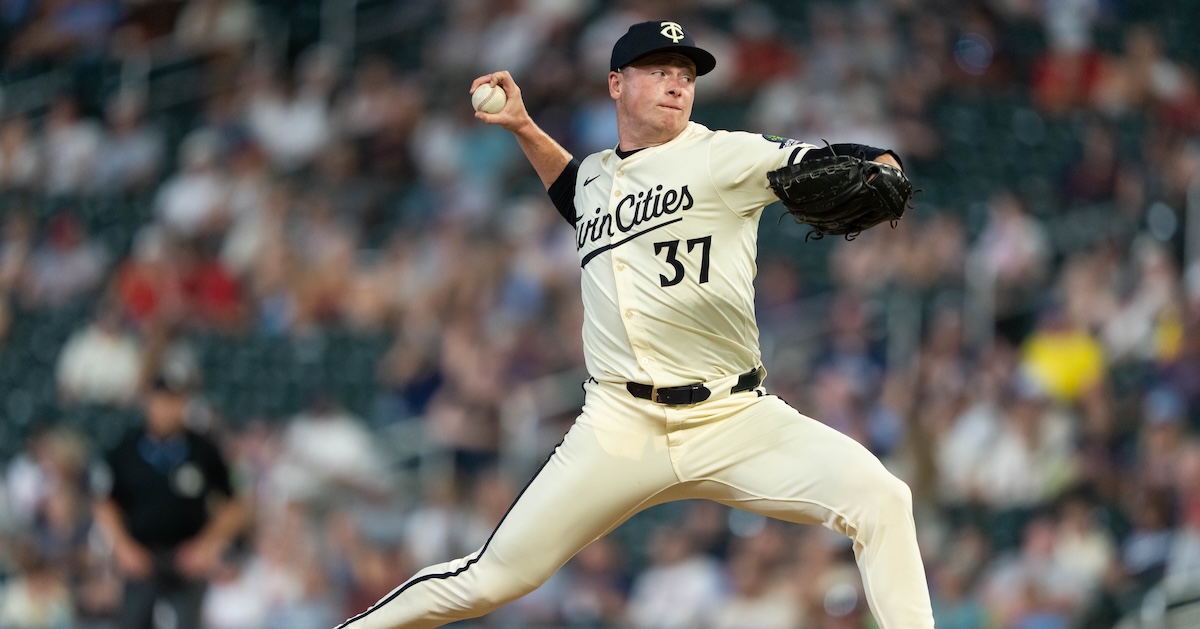
For Twins fans, the Louis Varland deal was something like the final straw. Parting with Willi Castro could be forgiven — his contract was up at the end of this season. Jhoan Duran and Griffin Jax — okay, they were under team control through 2027, but you could convince yourself that the deadline is the best time to part with a premium reliever, and look at the return. Dumping Carlos Correa and the majority of his contract on the Astros was definitely a feel-bad move, but it was also one that was requested by Correa himself after the Twins made clear that they were headed into a rebuilding phase, and the back half of that deal might look pretty bad from a production standpoint.
But giving up on Varland defied any reasonable explanation. He grew up in Minnesota, played his college ball there, and was brought into the Twins organization as a 15th rounder in the 2019 draft. From these humble hometown beginnings, he developed into a fire-breathing bullpen monster. Varland sits 98 mph on his four-seam fastball; he’s under team control until 2030, and wouldn’t even hit arbitration until 2027. If there was ever a perfect closer to bridge from one competitive Twins era to the next, it would’ve been Varland.
Instead, the front office sent him (along with Ty France) off to Toronto in exchange for outfielder Alan Roden and left-handed pitcher Kendry Rojas. On the merits, it’s a reasonable return; Roden can really rake, and Garcia is a legitimate pitching prospect close to the big leagues. Read the rest of this entry »
Orioles Send Mullins to Mets and Morton to Tigers, and Get a Gaggle of Pitchers in Return
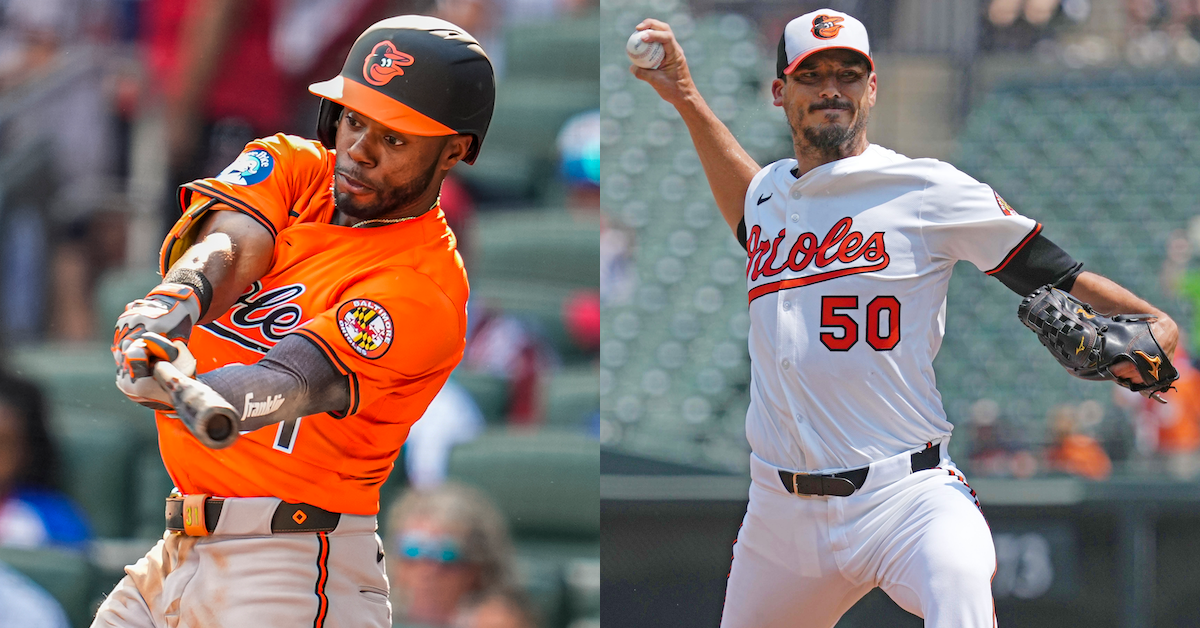
Though many predicted heading into the 2025 season that the Orioles’ weak starting rotation and general inactivity over the offseason would come back to haunt them, even Baltimore’s biggest skeptics weren’t prognosticating that the team would sit well under .500 and 7.5 games out of playoff position at the end of July. Such as it is, the Orioles spent this year’s trade deadline turning over roughly a third of their roster. Over the last week or so, the O’s have traded relievers Gregory Soto, Seranthony Domínguez, and Andrew Kittredge, along with infielders Ryan O’Hearn and Ramón Urías. Then on Thursday afternoon, Anthony DiComo reported that Cedric Mullins was on his way to the Mets; a few hours later, Jeff Passan broke the news that Charlie Morton would be joining the Tigers. The only healthy pending free agent who wasn’t traded out of Baltimore is Tomoyuki Sugano, and with Zach Eflin hitting the IL mere hours before the deadline, Sugano is now a load-bearing member of the rotation. Read the rest of this entry »
